Introduction
- Hypothalamus and pituitary gland.
- Metabolism and reproduction.
- Child growth deficiency.
- Other conditions.
Growth hormone (GH) is produced in the hypothalamus and pituitary gland. This hormone plays an essential role in metabolism and reproduction (Robinson & Shaw, 2015). Children diagnosed with growth deficiency require GH-based treatment. Adults can also develop growth hormone deficiency due to pituitary gland damage, injury, infection, and radiation therapy. Some other conditions are also treated with the help of this hormone. For instance, such genetic disorders as Turner’s, Prader-Willi, and Noonan syndromes are effectively addressed with the help of GH.
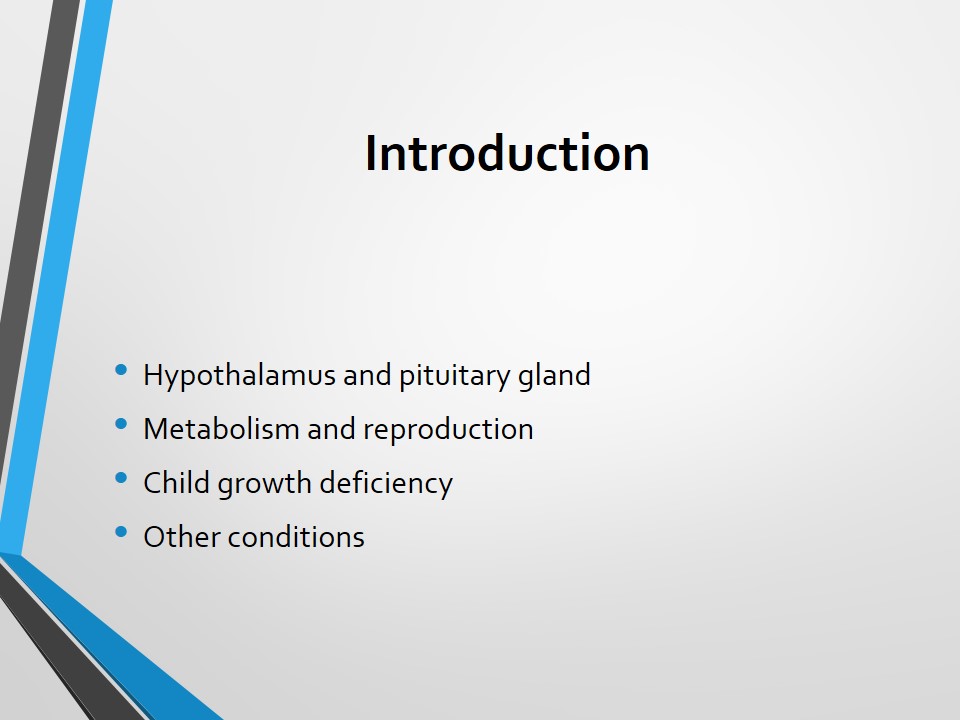
Pharmacodynamics
- What is GH?
- GH’s effects.
- GH and hyperglycemia.
- Synthesized GH.
- Synthesized GH’s effects.
Growth hormone is a single-chain polypeptide that passes through cell membranes and is produced in the pituitary gland (Robinson & Shaw, 2015). GH improves such processes as fat breakdown, protein synthesis, and tissue growth. Since GH decreases cell’s usage of glucose, it tends to cause hyperglycemia. Recombinant DNA technology advances enabled researchers to synthesize GH. The effects of the synthesized GH are similar to the effects of natural growth hormones. The synthesized GH causes decreased lipolysis and increased uptake of amino acids and glucose. These drugs can also lead to skeletal and organ growth, as well as cellular protein synthesis increase.
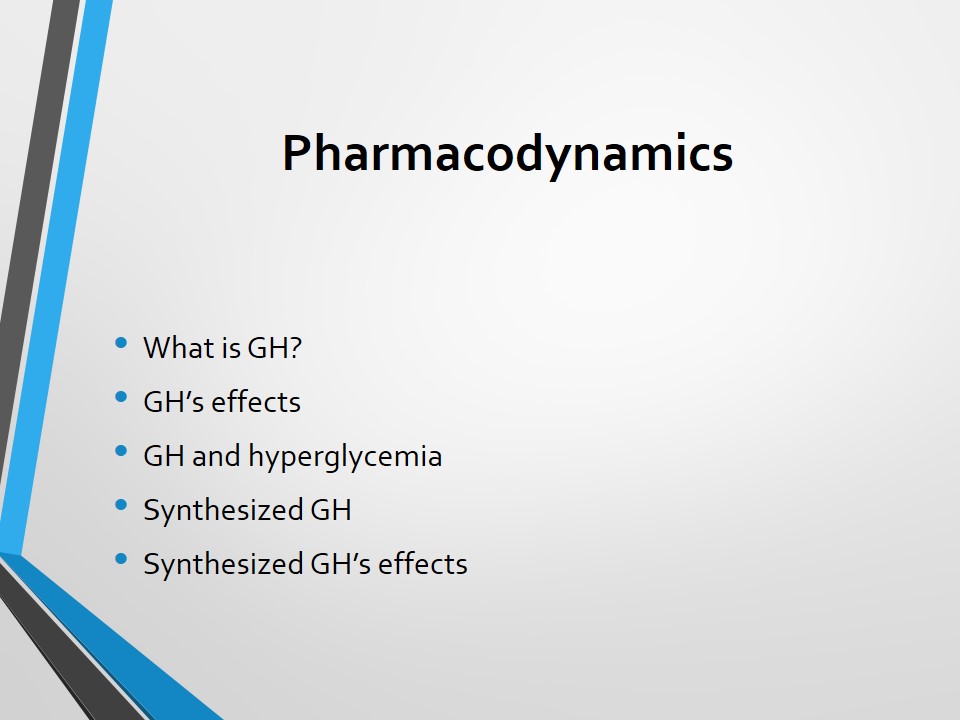
Pharmacokinetics
- Quick absorption.
- Localized in kidneys and liver.
- 36-hour persistence of active blood levels.
- Patients with renal and hepatitis dysfunction.
Synthesized GH is quickly absorbed, and its effects do not depend on the administration method (Robinson & Shaw, 2015). GH is mainly localized in kidneys and liver. Due to its 36-hour persistence in the blood level, GH is commonly used on the every-other-day basis. In some cases, daily usage is also possible. Patients diagnosed with renal and hepatitis dysfunction may have hormone clearance impairment.
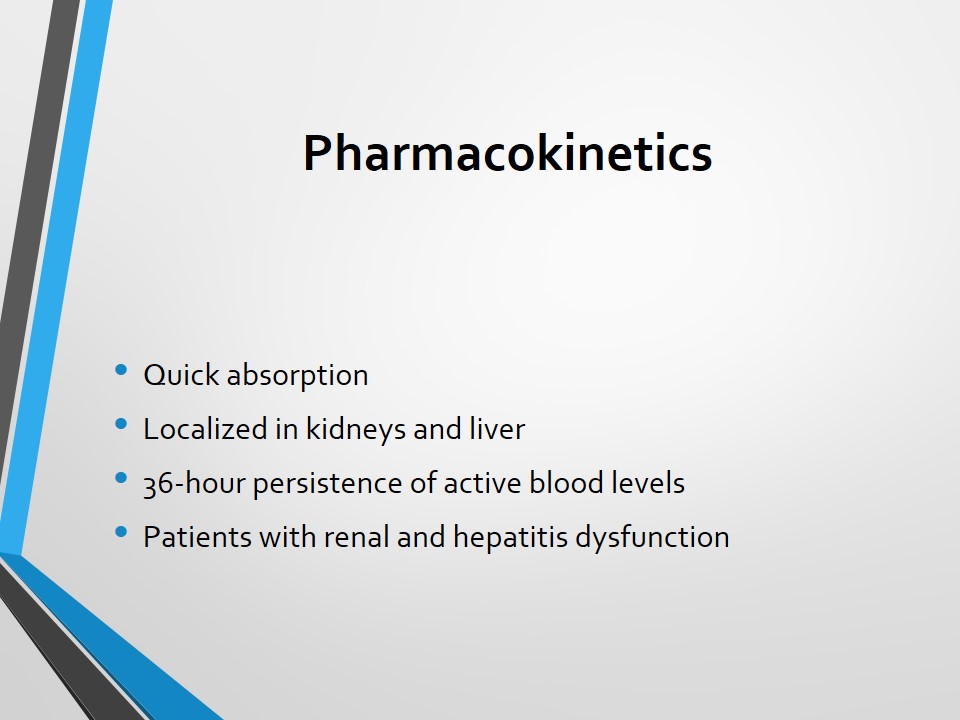
Pharmacotherapeutics
- Patients diagnosed with active tumor growth or closed epiphyses, adrenocorticotropic deficiency.
- Diabetic patients.
- Rare negative reactions.
- Medication interaction.
GH should be used cautiously if such conditions as active tumor growth, closed epiphyses, adrenocorticotropic hormone deficiency, and thyroid disorders are apparent. Diabetes and glucose intolerance are conditions making the use of GH undesirable since the hormone induces insulin resistance. The development of persistent antibodies occurs in up to 40% of patients receiving GH (Robinson & Shaw, 2015). These people have reduced response to the medication. Rare negative reactions are hyperglycemia, edema, hypothyroidism, pain at the place of injection, or even death. As far as GH interaction with other drugs, insulin tends to be less effective. Serious side effects of anticonvulsants have been reported. Estrogens also reduce the effectiveness of GH.
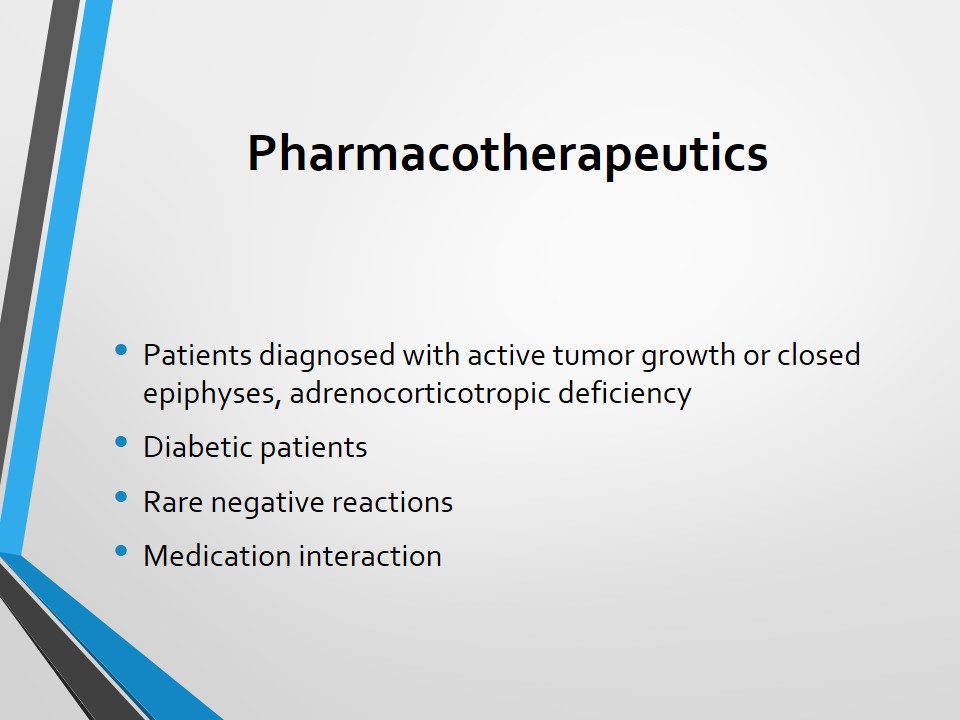
Pharmacotherapeutics: Clinical Use
- People with growth failure.
- Genetic disorders.
- Brain recovery.
Growth hormone is commonly utilized to treat growth failure in children. Young children benefit from the administration of GH while adolescents may have moderate results. Adult patients diagnosed with GH deficiency are also treated with the help of GH. The use of GH is a part of the treatment of Turner’s syndrome. Somatropin deficiency is often treated with the help of GH, but this medication is used cautiously due to possible adverse effects. Such genetic disorders as Prader-Willi and Noonan syndromes are also treated with the help of GH (Satoskar, Rege, & Bhandarkar, 2015). GH has proved to be effective in treating brain injuries. Devesa et al. (2015) reported significant improvements in a patient with severe brain injury who received GH as a part of treatment. Devesa et al. (2015) emphasize that the use of GH is an effective and safe strategy to help neurorehabilitation in patients with traumatic brain injury.
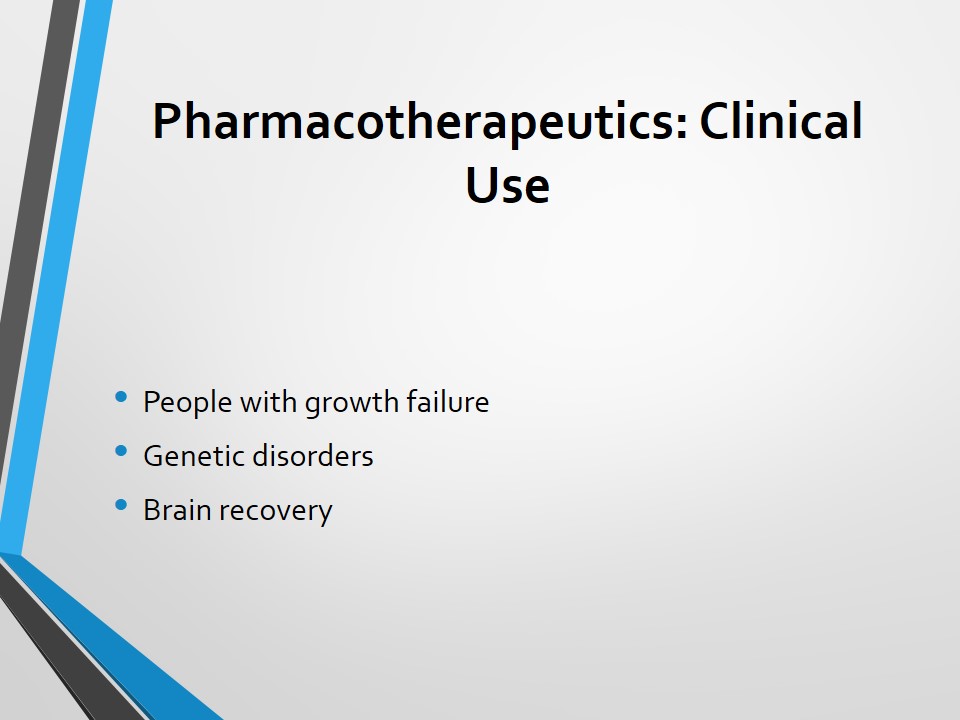
Patient Education
- Administration-related aspects.
- Negative reactions.
- Lifestyle management.
Training should be provided to patients, people who will administer GH, and caregivers in order to prevent possible negative consequences. Such topics as the use of syringes, disposal of needles, drugs storage, and dosage should be covered. Healthcare professionals should instruct patients and their close ones about different administration techniques, sites for injections, and associated issues (Robinson & Shaw, 2015). Patients should also be made aware of the negative effects that may occur. Such symptoms as persistent pain at the injection site, certain neurological changes, and headaches should be reported. Patients should be informed about growing pain associated with GH treatment. Cancer development requires the termination of the use of GH. Patients receiving GH treatment should be encouraged to have regular meetings with an endocrinology team. Healthcare professionals should also help patients develop appropriate diets and lifestyles.
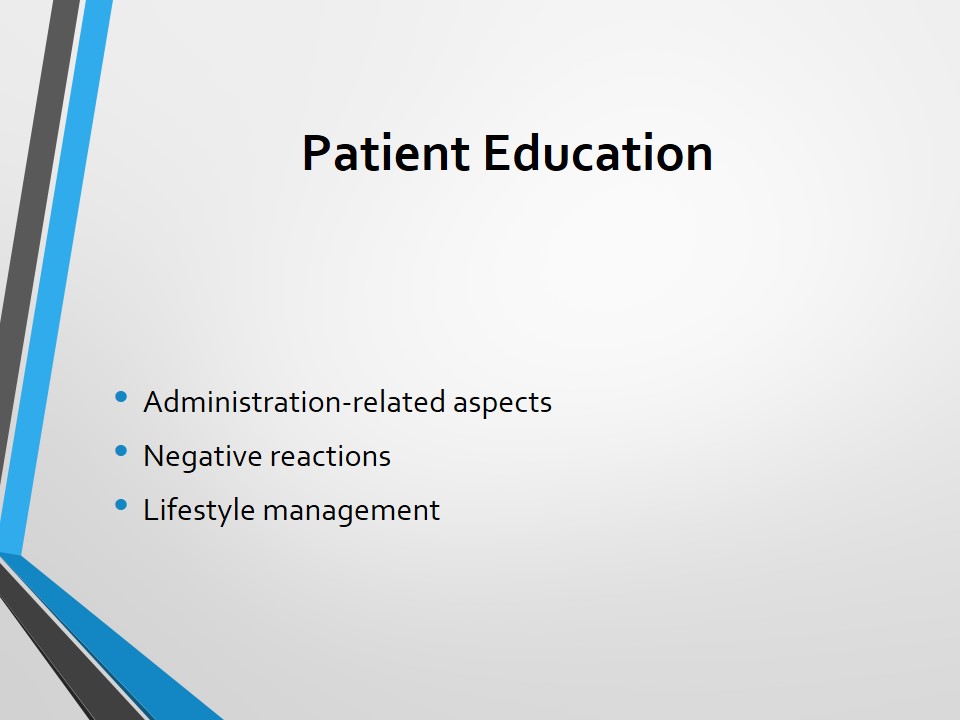
Conclusion
- GH is effective for treating various health conditions.
- GH should be prescribed with cautions.
- Patient education is required in order to avoid severe adverse consequences.
GH-based treatment has proved to be effective in many cases. Growth hormone deficiency is the primary condition that requires the use of GH. However, this medication should be utilized with considerable precautions due to serious side effects. Patients and their close one should receive comprehensive and lasting training that can help the patient improve the quality of their lives.
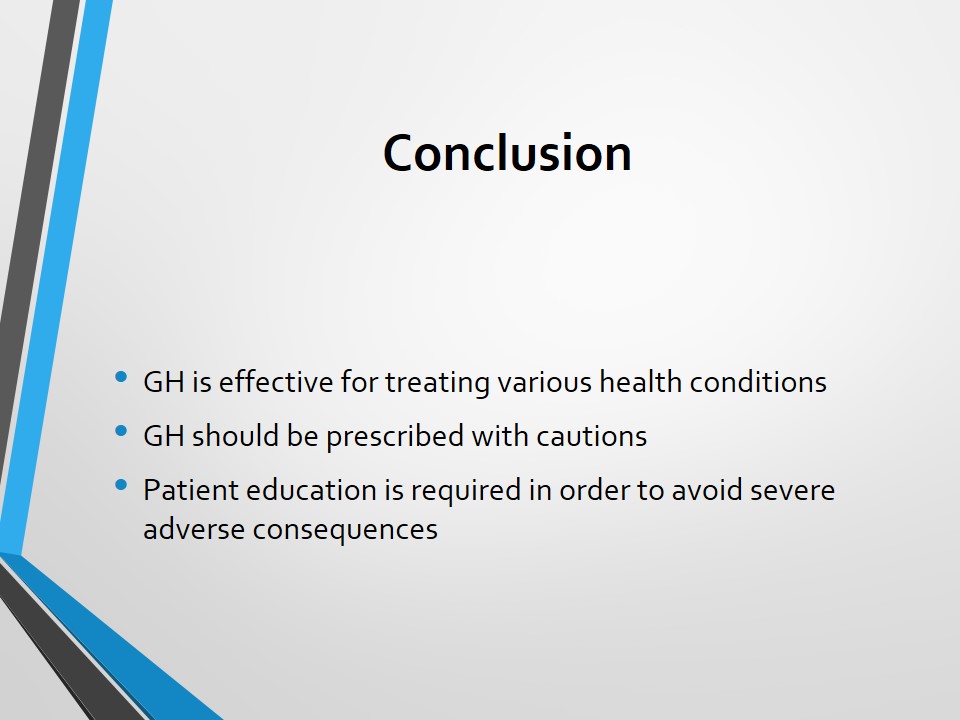
References
Devesa, J., Díaz-Getino, G., Rey, P., García-Cancela, J., Loures, I., Nogueiras, S., … Devesa, P. (2015). Brain recovery after a plane crash: Treatment with Growth Hormone (GH) and neurorehabilitation: A case report. International Journal of Molecular Sciences, 16(12), 30470-30482. Web.
Robinson, M., & Shaw, K. (2015). Drugs affecting the endocrine system. In T. M. Woo & M. V. Robinson (Eds.), Pharmacotherapeutics for advanced practice nurse prescribers (4th ed.) (pp. 541-615). Philadelphia, PA: F.A. Davis.
Satoskar, R. S., Rege, N., & Bhandarkar, S. D. (2015). Pharmacology and pharmacotherapeutics (24th ed.). New Delhi, India: Elsevier Health Sciences.